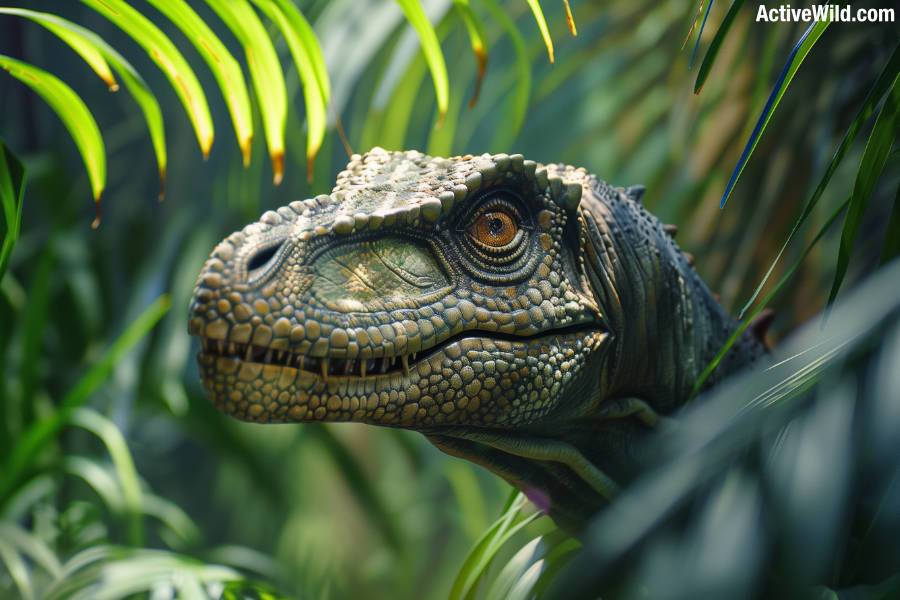
Your complete guide to dinosaurs! Read on to become an expert on all aspects of dinosaurs and life in the Mesozoic Era!
On this page, you’ll find lists of dinosaurs by period, plus a huge amount of interesting dino facts, including: What is a dinosaur? When and where did dinosaurs live? How long did dinosaurs live on Earth? When and why did dinosaurs go extinct?
Get ready to explore the amazing world of dinosaurs…
Dinosaurs Page Index
Scroll down to get started, or click on any of the links below to go directly to the dinosaur facts you need…
If you enjoy reading this page, then tell your friends, share it on social media or link to it from your own website. It really helps us!
Discover Dinosaurs with Active Wild

Welcome to the Active Wild Dinosaurs page, your all-in-one guide to the rulers of the Mesozoic Era!
Below, you’ll find a list of dinosaurs by period (Triassic, Jurassic and Cretaceous). Click on the links to see pictures and info on your favorite dino!
Further down the page, you’ll find a complete guide to dinosaurs, covering: what dinosaurs were, when they existed, how long they lived for, and why they died out… together with much more information that will give you an idea of what the world was like during the ‘Age of Reptiles’.
By the time you’ve finished, you’ll be a true dinosaur expert!
Types Of Dinosaurs By Period
What’s your favorite dinosaur?
Triassic Period Dinosaurs
Alwalkeria
Camposaurus
Coelophysis
Daemonosaurus
Eoraptor
Herrerasaurus
Liliensternus
Plateosaurus
Riojasaurus
Saturnalia
You can see more Triassic Period dinosaurs on this page: Triassic Period Dinosaurs
Jurassic Period Dinosaurs
Allosaurus
Apatosaurus
Archaeopteryx
Barosaurus
Brachiosaurus
Brontosaurus
Camarasaurus
Ceratosaurus
Compsognathus
Dilophosaurus
Diplodocus
Huayangosaurus
Megalosaurus
Stegosaurus
You can see more Jurassic Period dinosaurs on this page: Jurassic Period Dinosaurs
Cretaceous Period Dinosaurs
Abelisaurus
Albertosaurus
Ankylosaurus
Argentinosaurus
Baryonyx
Carcharodontosaurus
Carnotaurus
Daspletosaurus Horneri
Deinonychus
Gallimimus
Giganotosaurus
Gorgosaurus
Hylaeosaurus
Iguanodon
Oviraptor
Parasaurolophus
Spinosaurus
Tyrannosaurus Rex
Triceratops
Troodon
Velociraptor
You can see more Cretaceous Period dinosaurs on this page: Cretaceous Period Dinosaurs
Other Dinosaur Pages On Active Wild
Click on any of the links below for more amazing dinosaur info!
- When were Dinosaurs Alive?
- How Long Were Dinosaurs On Earth?
- Animals That Lived With Dinosaurs
- List Of Prehistoric Animals That Are Not Dinosaurs
- When Did Dinosaurs Go Extinct?
- How Big Was the Asteroid That Killed the Dinosaurs?
- What is the Smallest Dinosaur?
- Are Dinosaurs Reptiles?
- Were Dinosaurs Real?
- When Were Dinosaurs Discovered?
- How Long Ago Did Dinosaurs Live?
Dinosaurs: The Complete Guide (From Egg to Extinction)
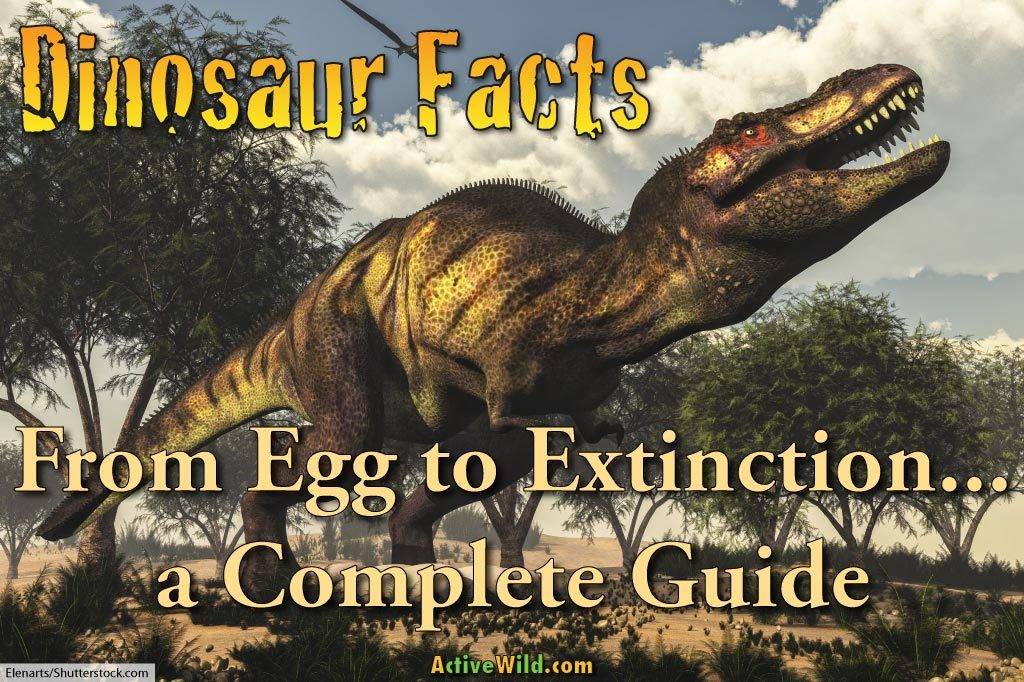
What Does ‘Dinosaur’ Mean?
The word ‘dinosaur’ was invented by the English biologist Sir Richard Owen. He first used the term Dinosauria in 1842, when he needed a word for a new group of animals that he had recently identified.
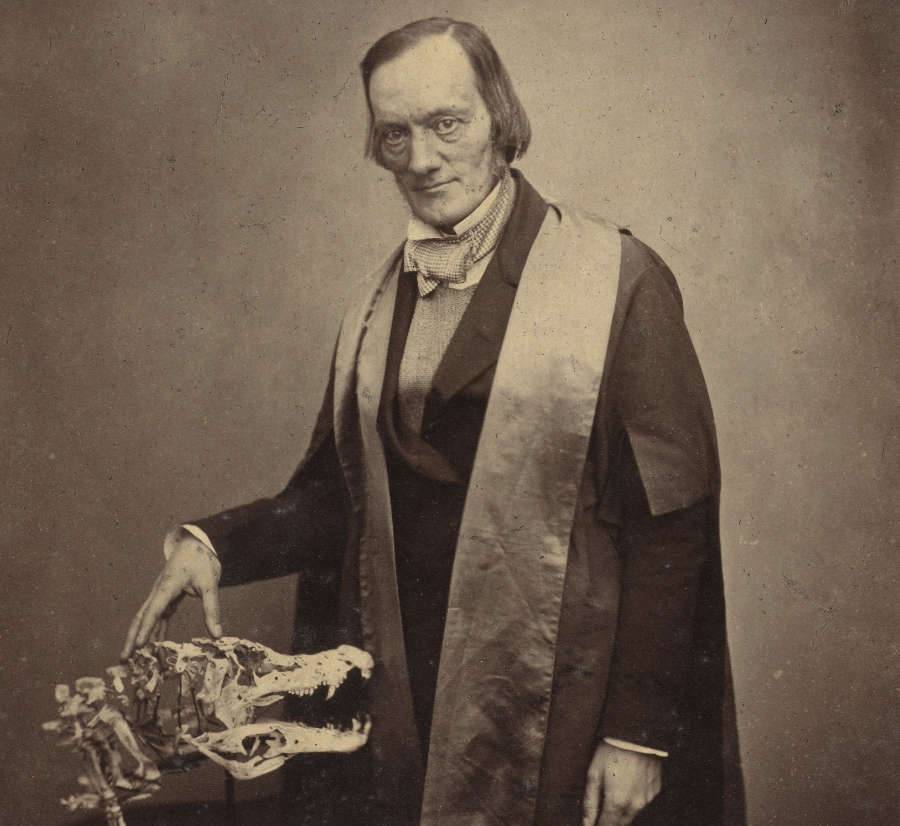
The word dinosaur comes from two Greek words: ‘deinos’, which means ‘terrible’, and ‘sauros’, which means ‘lizard’. Therefore ‘dinosaur’ means ‘terrible lizard’.
Strictly speaking, dinosaurs aren’t lizards, but it’s still a very fitting name!
What Is A Dinosaur?
This may surprise you, but dinosaurs are still alive, in the shape of birds! You’ll learn more about the relationship between dinosaurs and birds further down the page.
On this page, when we use the word dinosaurs, we mean ‘non-avian dinosaurs’. That is, all of the dinosaurs that didn’t evolve into birds.
Evolution, by the way, is how animals change over time. It doesn’t happen overnight; a bird didn’t suddenly hatch from a T. Rex egg! Evolution can take thousands–if not millions–of years, with countless tiny changes occurring over these immense timespans.
What Makes a Dinosaur a Dinosaur? Dinosaur Characteristics
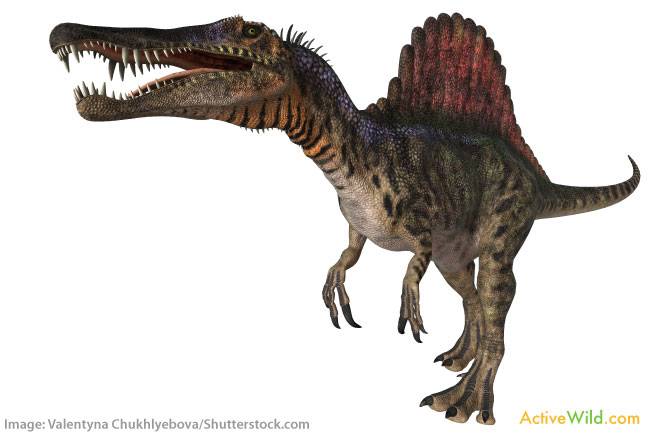
Paleontology (or palaeontology in British English) is the scientific study of prehistoric life, and a paleontologist (or palaeontologist in British English) is a scientist involved in this branch of science.
Dinosaurs were a tremendously varied group of animals. Some dinosaurs were grazers, some were predators, some lived in herds, some had horns and some had armour, but despite all these differences, there were things that all dinosaurs had in common.
Dinosaurs were reptiles, and all dinosaurs laid eggs.
The legs of dinosaurs projected downwards from the body. This adaptation gave dinosaurs added mobility and speed, setting them apart from early reptiles and crocodiles, which had “sprawling” gaits, their legs projecting outwards from the body.
Dinosaurs lived between 250 and 65 million years ago, from the early Triassic period to the end of the Cretaceous period.
Being reptiles, dinosaurs are related to the snakes, crocodiles, lizards, etc., of today. However, whereas virtually all of today’s reptiles have little or no internal control over body temperature (i.e. they are cold-blooded, or ectothermic), there is evidence to suggest that at least some dinosaurs were warm-blooded, or endothermic.
Dinosaurs were land animals (although some are thought to have had semi-aquatic lifestyles), and, until they began to evolve into birds, there were no flying dinosaurs.
Pterosaurs, the famous “flying dinosaurs”, were not actually dinosaurs; neither were “swimming dinosaurs” such as plesiosaurs and mosasaurs.
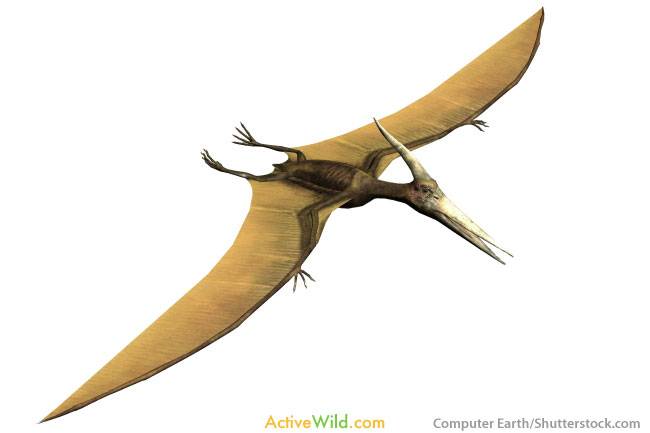
There were many different types of dinosaur, and they lived in many different habitats. There were meat-eating, plant-eating and omnivorous dinosaurs, and many evolved to have specialist diets such as seeds or insects.
Dinosaurs ranged in size from the chicken-sized compsognathus (and some recently discovered species that may have been even smaller) to the giant sauropods – including the Titanosaurs, the biggest known dinosaurs.
Some dinosaurs walked on two legs (i.e., they were bipedal), some on four (i.e., they were quadrupedal), and some (such as Iguanadon) were able to walk on both two and four legs.
The very first dinosaurs – the ancestors of all dinosaurs that followed – were bipedal.
Characteristics Of Dinosaurs: Summary
- Dinosaurs were reptiles
- Straight legs projecting downwards from the body.
- Lived on land (with some semi-aquatic exceptions). (Plesiosaurs and mosasaurs were not dinosaurs!)
- Could not fly (until they evolved into birds). (Pterosaurs were not dinosaurs!)
- Lived in all three periods of the Mesozoic Era (Triassic, Jurassic and Cretaceous).
- First appeared during the mid-Triassic period.
- Became extinct at the end of the Cretaceous period.
Types Of Dinosaurs
- You can find out more about the different types of dinosaurs on this page: Types Of Dinosaurs
We’ve all heard of dinosaurs such as Tyrannosaurus Rex, Stegosaurus and Allosaurus. Each of these, and all of the other famous dinosaurs, were one of either of the two main types of dinosaur, Ornithischia and Saurischia.
The two types of dinosaur were identified by British paleontologist Harry Seeley.
1. Ornithischia
The name Ornithischia comes from the Greek for “bird-hipped”. The hip bones of these dinosaurs are similar to those of present-day birds.
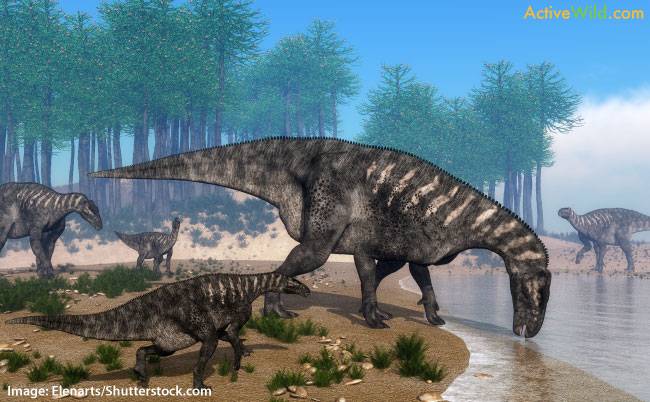
Confusingly, birds are actually descended from the Saurischians, rather than the Ornithischians.
Ornithischians were herbivorous (plant-eating) dinosaurs. Early Ornithischians were small and bipedal (walking on two legs). However, as they evolved, the ornithischians came to be more varied than the saurischians. Most well-known ornithischians walked on four legs.
Some examples of ornithischians include the armoured dinosaurs such as ankylosaurus and stegosaurus, ornithopods such as Iguanodon, and ceratopsians such as triceratops.
2. Saurischia

Saurischian means ‘lizard-hipped’; this type of dinosaur’s hips resemble those of a lizard. Saurischian dinosaurs can be divided into two main types: theropods and sauropods.
Theropods
Theropoda is the group of dinosaurs that includes all of the famous carnivorous species you’ve no doubt seen in films such as ‘Jurassic Park’. These meat-eaters walked on two powerful legs, and had long tails, short arms, and big jaws!
Examples of theropods include Allosaurus, Oviraptor, and Tyrannosaurus.
A group of theropod dinosaurs eventually evolved into birds; and theropods were therefore the only dinosaurs to survive the Cretaceous–Paleogene extinction event that took place around 66 million years ago, in which all other dinosaurs became extinct.
Sauropods
The other main type of saurischian dinosaurs were the sauropods. These were huge, herbivorous dinosaurs, with small heads, long necks, and four stout legs to carry their enormous weight. Well-known sauropods include Apatosaurus, Diplodocus and Brontosaurus (all of which lived in the Late Jurassic Period).
How Did Dinosaurs Evolve?
Reptile-like animals evolved from four-legged amphibians 350 million years ago, during the Carboniferous period. The change from amphibian to reptile-like animal involved gaining legs, lungs, and eggs that could survive on land.
These adaptations meant that early reptiles were no longer tied to the water; they could move around and reproduce on land.
The primitive reptile-like animals split into several branches. Some would eventually become the familiar reptiles that we know today, such as snakes, lizards and turtles. Others would become mammals. Other branches, such as plesiosaurs, wouldn’t survive the various extinction events that would later befall the world.
One group of early reptiles were the archosaurs. The word ‘archosaurs’ means ‘ruling reptiles’.
An example of an archosaur is Erythrosuchus, a meat-eating early reptile which was around 5 metres (16 ft.) long.
Archosaurs went on to split into two main branches. One of these was the early crocodilians – the ancestors of today’s crocodiles and alligators.
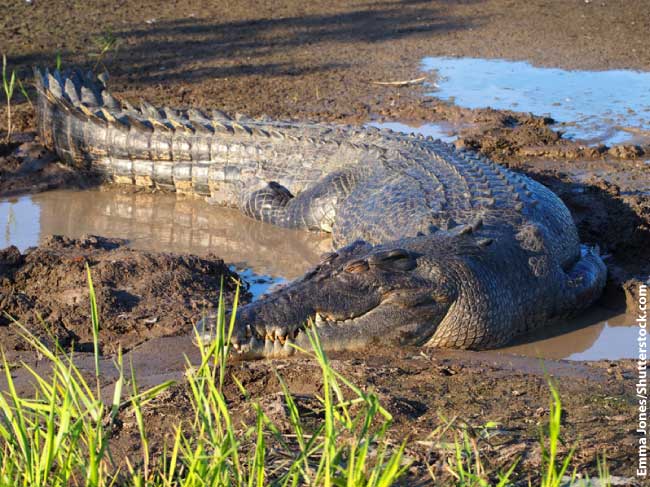
The other main type of archosaur was the Avemetatarsalians. This is the branch that would give rise to dinosaurs (and also to pterosaurs, the flying reptiles).
When Did Dinosaurs Live?
Dinosaurs lived in the Mesozoic Era, which is also known as the “Age of Reptiles”. The Mesozoic Era began around 252 million years ago, and ended around 66 million years ago. It is subdivided into three smaller periods: the Triassic, Jurassic and Cretaceous periods.
The earliest dinosaurs began to appear between around 231 and 243 million years ago, during the Triassic period. They were small, and walked on two legs.
Around 201.3 million years ago, a worldwide extinction event took place. This marked the end of the Triassic period and the beginning of the Jurassic period.
The Triassic–Jurassic extinction event, as it is now known, wiped out over half of the species we know existed during that time. It also set the scene for the dinosaurs to take over the world!
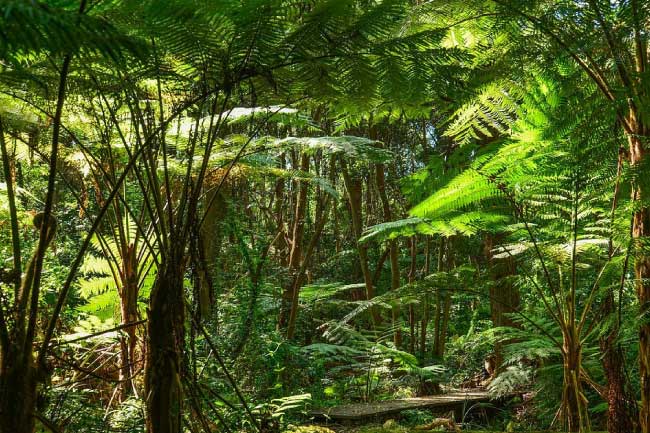
Dinosaurs became the dominant land vertebrates (animals with backbones) after the Triassic–Jurassic extinction event. They remained so throughout the Jurassic and Cretaceous periods.
Their reign came to an end with another extinction event – the Cretaceous–Paleogene extinction event – which occurred around 66 million years ago. This caused all of the non-avian dinosaurs to become extinct.
Are Dinosaurs Extinct?
Technically, dinosaurs survived (as birds), but with the Cretaceous–Paleogene extinction event, the age of the giant reptiles was over. The reign of the dinosaurs lasted for around 170 million years.
Dinosaurs existed for around 170 million years. Homo sapiens (modern humans) have only been around for 200,000 years, and Primates (the group that includes all apes and monkeys) has been around for 60 to 80 million years. We’ve got a long way to go to be as successful as dinosaurs!
Birds Descended From Dinosaurs

Scientists now think that all of today’s birds are descended from therapods, which were Saurischian dinosaurs (see ‘Types of Dinosaur’, above). Many therapods are believed to have had feathers – even Tyrannosaurus Rex!
The most bird-like of the therapods branched off into a group called Coelurosauria, which comes from the Greek meaning ‘hollow-tailed lizards’.
Although outwardly, many Coelurosaurians didn’t exactly resemble modern birds (Tyrannosaurus Rex was a Coelurosaurian), a branch of Coelurosauria called maniraptorans would become the ancestors of all of the birds in the world today.
Birds began to appear in the Jurassic period, and would be the only dinosaurs to survive the Cretaceous–Paleogene extinction event.
Where Did Dinosaurs Live?

Dinosaur remains have been found on every continent. They’ve even been found in Antarctica, where scientists have found fossils of both plant-eating and meat-eating dinosaurs.
This doesn’t mean, however, that dinosaurs lived in Antarctic conditions. In the Triassic period – when dinosaurs began to appear – there was only one huge supercontinent, called Pangaea, which means ‘all Earth’.
The Triassic climate was dry and warm. Dinosaurs could spread far and wide across the vast landmass. This is why we find fossils of the same type of dinosaurs in different parts of the world today.
In the Jurassic period, Pangaea began to split into two main landmasses called Laurasia and Gondwana.
As the continents pulled apart, oceans flooded into the gaps between them. Dinosaurs were no longer free to roam across the whole of the world’s land. The climate began to cool (although it was still hot), and there was more rain.
Throughout the Jurassic and Cretaceous periods, the landmasses would continue to slowly separate into the continents we know today.
Dinosaur Extinction

Dinosaurs were extremely successful animals, but eventually the ‘Age of Reptiles’ came to an end.
Around 66 million years ago, life on Earth was devastated by a sudden, dramatic occurrence that caused 75% of all plant and animal species to become extinct.
There are many explanations for what is now known as the Cretaceous–Paleogene (K-Pg) extinction event. Theories include massive worldwide volcanic eruptions and changes in global temperatures.
Some people even think that another star – called Nemesis – approaches the Sun every 26 million years, causing asteroids to smash into Earth.
Meteorite Theory
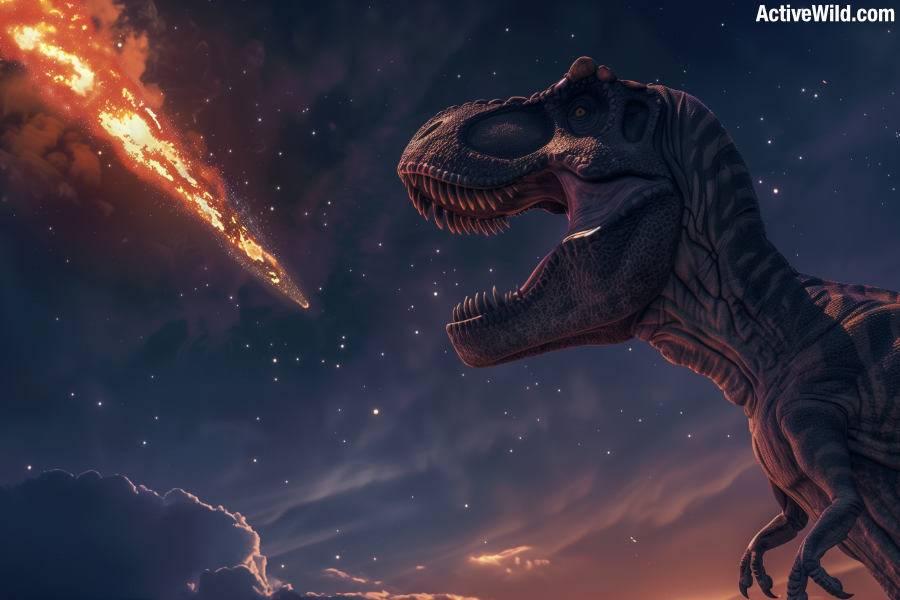
Geologists have identified a narrow band of sedimentary rock that runs between rocks formed in the Cretaceous and Paleogene periods. This band is known as the Cretaceous–Paleogene, or K–Pg, boundary.
Contained within this rock is a high concentration of an otherwise rare metal called iridium. Iridium is found mainly at the centre of the Earth, and in asteroids and comets.
This gave rise to one of the likeliest explanations for the K-Pg mass extinction: the planet was struck by a meteorite that was around 6 miles (10 km) across.
The impact would have caused an explosion around 2 million times greater than a nuclear bomb.
The explosion would have sent up a gas cloud big enough to envelop the world and cause several years of darkness. Temperatures would have dropped dramatically. Plants would have been unable to grow, and entire food chains would have been wiped out.
The meteorite theory is supported by the discovery of the Chicxulub crater in Mexico. This huge impact crater appears to have been created around the time of the K-Pg extinction event.
How We Know About Dinosaurs
Paleontology
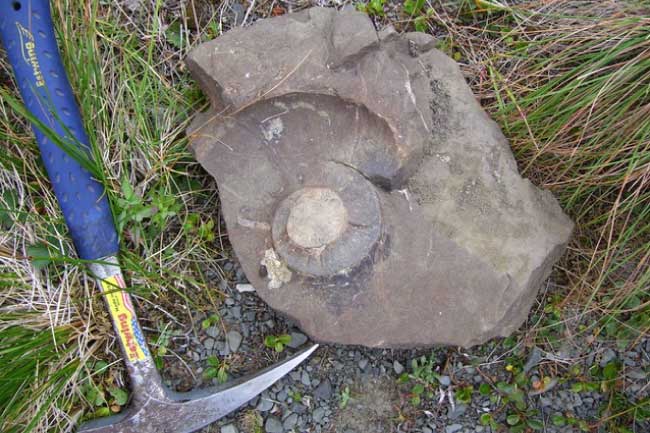
Scientists who study ancient life are known as paleontologists (palaeontologists in British English). They study fossil remains, using knowledge from other scientific fields such as biology, chemistry and geology to create a picture of how the world used to look.
Fossils
- You can find out more about fossils on this page: Fossil Facts
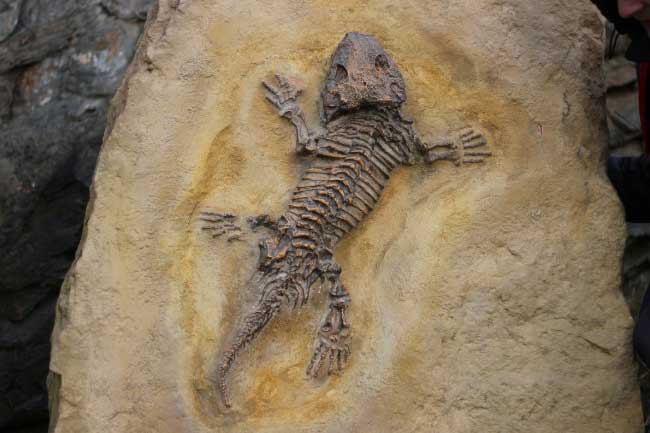
Today, most people know about dinosaurs. It’s easy to forget that nearly everything we know about these extinct animals comes from fossils.
Fossils are the preserved traces and remains of living things. They’re usually found in sedimentary rock. Fossils can include bones, shells, imprints, or traces such as footprints, and they form through various processes like mineralization, where organic material is replaced by minerals, or through natural casts and molds, providing crucial information about the history of life and environments on Earth.
Fossils were being discovered long before man truly realised what they were. They may even have given rise to myths and legends about dragons and other monsters.
It was only in the 19th century that serious study of fossils began.
Fossils are formed in several ways. One kind of fossil is formed when the buried remains of an animal are replaced by minerals, creating a stone fossil.
Another way a fossil is made is when the original remains dissolve away completely, leaving an outline of the remains. This is called a ‘mould fossil’.
Not all fossils are of the animals themselves. Traces of dinosaurs, such as footprints and even dinosaur droppings can be fossilised.
Scientists can piece together a surprising amount of information from fossil specimens. Not only can they tell what a dinosaur may have looked like, but also how it lived and what it ate. From the rock in which the fossil was found they can tell how old it is.
Top Ten Dinosaur Facts
- The scientific study of ancient life is called paleontology (palaeontology in British English). Therefore, if you study dinosaurs, then you’re a paleontologist!
- All of our knowledge of dinosaurs comes from fossils – the remains or traces of living things that have been preserved as rocks.
- The word ‘dinosaur’ means ‘terrible lizard’. It was invented by the English biologist Sir Richard Owen.
- Dinosaurs lived during much of the Mesozoic Era, which occurred from around 252 to around 66 million years ago.
- Dinosaurs were the dominant land vertebrates during the Triassic and Cretaceous periods of the Mesozoic Era.
- Most scientists now consider birds to be dinosaurs.
- The non-avian dinosaurs (e.g. dinosaurs that weren’t birds) were wiped out in the Cretaceous–Paleogene (K-Pg) extinction event, which occurred around 66 million years ago.
- Dinosaurs existed for around 170 million years. Homo sapiens (modern humans), on the other hand, have only existed for a mere 200,000 years.
- Even the fearsome T Rex may have had feathers.
- Dinosaur remains have been found in every continent.
Dinosaurs: Conclusion
Now that you have finished the article, try to imagine what life was really like in the Jurassic and Cretaceous periods. Picture in your mind how these huge reptiles might have looked walking, feeding, hunting and fighting.
Imagine seeing the effects of the Cretaceous–Paleogene extinction event, with darkened skies, plants dying, and the last of the non-avian dinosaurs wandering around searching for food.
Now reflect on the fact that everything that we know about dinosaurs comes from fossils! It’s amazing how much we can piece together using many different branches of science, from geology to zoology.
We hope that you have enjoyed learning about dinosaurs.
If you have any comments or questions then please feel free to ask them in the comments section below. We’d love to hear from you!
With this page, we set out to create a clear, fact-filled guide to dinosaur life for students and adults alike.
If you’ve enjoyed reading this page, tell your friends, share it on social media using the share buttons provided, or link to this page from your own website!
The post Dinosaurs – The Complete Guide, With Facts And Pictures appeared first on Active Wild.